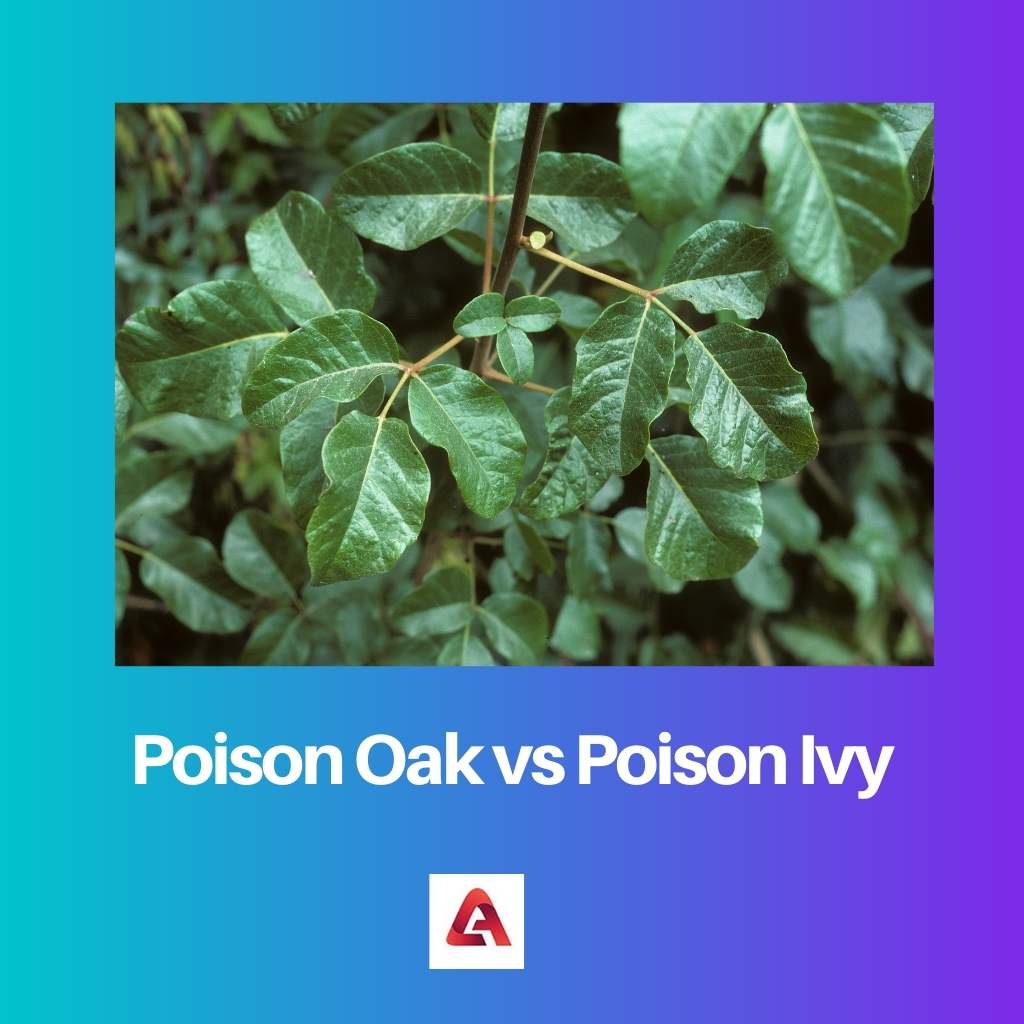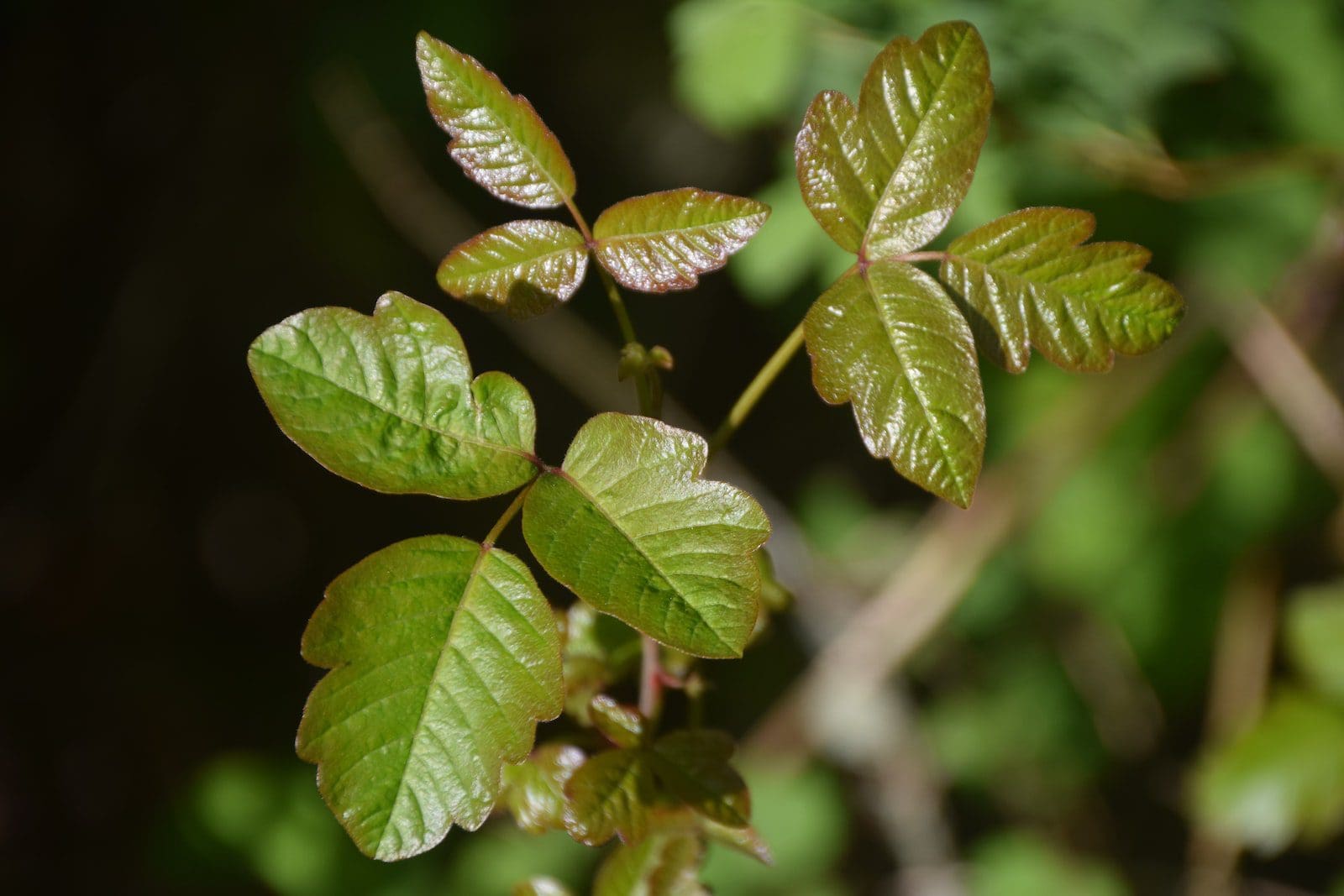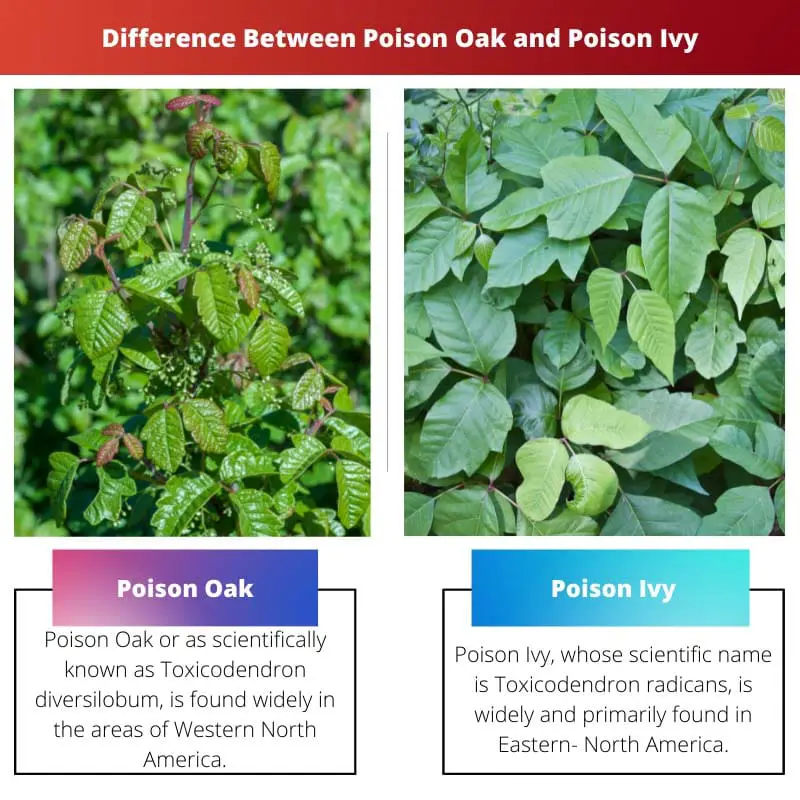Poison Oak and Poison Ivy are both plants that are found all over the United States. Both of them are very infamous as they cause skin allergic reactions once they are touched.
If not taken proper care of and attended to with immediate treatment, the reactions may escalate to serious rashes.
Key Takeaways
- Poison Oak and Poison Ivy both contain urushiol, an oil that causes an allergic reaction in humans.
- Poison Oak has leaves with a rounded shape and is found on the West Coast of the US, while Poison Ivy has leaves with a pointed shape and is found on the East Coast of the US.
- Poison Oak grows as a shrub or a vine, while Poison Ivy grows as a vine.
Poison Oak vs Poison Ivy
Poison oak is a shrub that causes itchy, blistering rashes on the skin due to an oil found in the plant called urushiol. It is found in western North America. Poison ivy is a poisonous plant with leaves like almond leaves that secrete an enzyme, causing painful rashes. It is found in Eastern North America.

Western poison oak and Pacific poison oak are the two other names of Poison Oak. The scientific name of the same is Toxicodendron diversilobum.
It is a shrub, and it belongs to the sumac family. The family is called Anacardiaceae. The leaves have a resemblance to the oak leaves. Poison oak is mainly and widely found in the areas of North America.
Poison Ivy, scientifically known as Toxicodendron radicans, is found mainly and widely in the Eastern part of North America. The leaves have a bit of resemblance with the almond plant leaves.
The presence of urushiol in the plant causes rashes when being touched. The rashes cause tremendous skin irritation.
Comparison Table
| Parameters of Comparison | Poison Oak | Poison Ivy |
|---|---|---|
| Scientific Names | Toxicodendron diversilobum | Toxicodendron radicans |
| Found in | Western- North America | Eastern- North America |
| Leaf Appearance resemblance | Oak Leaf | Almond Leaf |
| Other Names | Pacific poison oak Western Poison Oak | Eastern Poison Ivy |
| Colour of flower | Small green-yellow | Small White |
What is Poison Oak?
Poison Oak, scientifically known as Toxicodendron diversilobum, is found widely in the areas of Western North America.
Also known by the names Pacific Poison Oak or Western Poison Oak, it has leaves that have a great resemblance with the Oaktree leaves.
The plant bears green-yellow flowers and secretes an enzyme that is extremely harmful to the human skin. Though birds and other small animals eat the seeds and fruits of this plant, the plant causes tremendous itching, pain, and even blisters.
These plants were used by the Californian Native Americans to make objects like baskets with stems of the plant. Even the dried roots were used to make the antidote for the rashes caused and even aid in curing ringworms.
The plant is also used and applied when rattlesnake bites, and it has proven to be effective. It also helps in curing dysentery. All these can be done only if the whole process is done with extreme care and proper supervision.
Moreover, if one gets rashes after getting into direct contact with the plant enzymes, then it is advisable that he or she consult a doctor and apply calamine lotion or cream.
The person should also take small lukewarm baths to wash the enzyme from the skin.

What is Poison Ivy?
Poison Ivy, whose scientific name is Toxicodendron radicans, is widely and primarily found in Eastern- North America. The plant is also known by the name Eastern Poison Ivy, and the plant’s leaves have a great resemblance with that of almond leaves.
It is mainly a shrub that grows up to 1.2 m, and it secretes harmful enzymes like urushiol. It is, at times, considered an unwanted weed. The plant sometimes grows like a vine, too, and can grow up to 10 to 25 cm.
The flowers of this plant are mostly white and are small in size. They blossom only in the months between May and July.
During the months of August to November, the plant bears small berry-like fruits, and they are one of the main sources of food for small animals, insects, and birds in that area.
The effect of this plant on humans is not so pleasant. The effect of the enzyme stays for about twelve to fifteen days. One is advised to take a consultation with a doctor immediately.
According to one report, approximately thirty-five thousand people are affected by this plant in North America annually.
One can also rub that affected area with running ice-cold water or run cotton soaked in alcohol to reduce the effect of the enzyme and hence reduce pain.

Main Differences Between Poison Oak and Poison Ivy
- The scientific name of Poison Oak is Toxicodendron diversilobum, whereas the scientific name of Poison Ivy is Toxicodendron radicans.
- The first one is found in Western- North America, whereas the latter one is found in Eastern- North America.
- The leaves of the Poison Oak have a close resemblance with the Oak leaves, whereas the Poison Ivy leaves are similar to that of the almond leaves.
- The other well-known names of Poison Oaks are Western Poison Oaks and Pacific Poison Oaks. The name of Eastern Poison Ivy is also knows Poison Ivy.
- The flowers of Poison Oak are of green-yellow color. Whereas in the case of Poison Ivy, it is white color.




